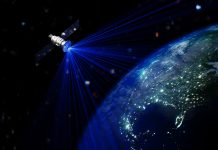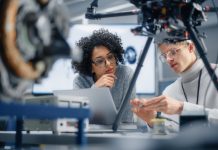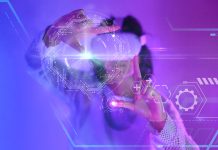The new PULSE project utilising both magnetic and acoustic levitation claims to hold the key to bioprinting technology with potential applications in space and on Earth
The cutting-edge magnetic and acoustic levitation will bioprint heart models to improve protection against radiation both in space and on Earth.
After being awarded nearly 4 million euros by the European Innovation Council’s Pathfinder Open, PULSE is aiming to foster technological innovations to improve human health and pave the way for safer and more sustainable space exploration.
Multi-Levitation bioprinting and creating realistic organoids
The device, designed by PULSE, combines magnetic and acoustic levitation into an innovative bioprinting platform capable spatiotemporal control of cell deposition.
According to the team, this new unparalleled technology facilitates the precise manipulation of biological materials, enabling the creation of highly sophisticated and realistic organoids that closely mimic the complexity of the corresponding human organs.
In vitro 3D human heart models
One of the key applications of PULSE’s bioprinting technology is the creation of in vitro 3D human heart models.
These models are essential tools for studying the effects of space and radiation on the human cardiovascular system.
By creating such advanced heart models, the team can provide invaluable insights into cardiac physiology and pathology, facilitating the development of preventive and therapeutic solutions for astronauts embarking on long-term space missions and cancer patients undergoing radiation therapy.
Project coordinator and Professor of Biofabrication for Regenerative Medicine at the University of Maastricht, Lorenzo Moroni, “The ambitious goals of the PULSE project are as much related to space research as they are to healthcare on Earth.
“Bioprinted organoids that closely replicate the complexity of human organs have the potential to reduce the reliance on animal experimentation and provide a more accurate and efficient platform to study disease mechanisms and evaluate drug responses.”
Bioprinted organoids that closely replicate the complexity of human organs have the potential to reduce the reliance on animal experimentation
The PULSE project: pushing the boundaries of scientific inquiry
]This ambitious project underlines PULSE’s team commitment to pushing the boundaries of scientific inquiry and technological innovation, driven by a desire to unlock the unknowns of human health and well-being in space and terrestrial living.
With a wealth of expertise and resources at their disposal, the consortium’s institutions combine their capabilities to ensure ground-breaking advances at the intersection of bioprinting, space medicine and heart disease research.
Find more information on the PULSE project here pulse-eic.eu.











